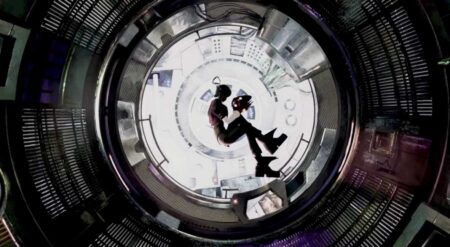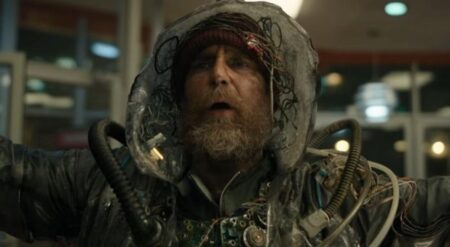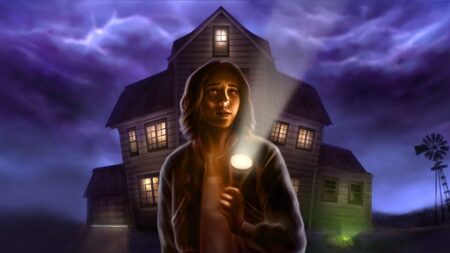In this new episode of Carolyn Talks…, I speak with Cherokee Nation film critic Shea Vassar, we discuss Wild Indian, the debut feature film of writer-director Lyle Mitchell Corbine Jr., which premiered at the Sundance Film Festival in January, 2021.
When Makwa a young Anishinaabe boy kills a classmate and coerces his friend Ted-O to help him bury the body and the truth, their fates are forever changed. This one terrible day creates a ripple effect leading to even more devastating results in their lives as men. Makwa (Michael Greyeyes) is an emotionally repressed business man who struggles to hide his violent tendencies from his wife and co-workers. Ted-O (Chaske Spencer) his former best friend, tries to adjust to life outside of prison, and away from crime. Burdened by the guilt of helping Makwa to cover up his crime, Ted-O find it hard to let go of the past, and is desperate to atone for what he’s done.
As a successful business man his determination to fit into white corporate America is an interesting and at times disturbing examination of how many Indigenous people are faced with the choice of either assimilating into white society, or be left to struggle and survive on the margins, of their own land. It says a lot that the effects of the colonization and genocide of Native Americans by white Europeans continue to create these kinds of situations, and identity crises.
For Ted-O, the lack of support and guidance for how he can become what is deemed as a ‘valuable member of society’ once being released from prison, is a subtle testament to how society itself seems to do it’s best to prevent former inmates from aspiring for better futures. That these rules and obstacles are both created by white society, is no coincidence.
Wild Indian is about more than two men living different lives. It’s about the emotional and mental trauma Indigenous children suffered at the hands of abusive instructors in residential schools, who used religion as a weapon to separate them from their culture and heritage, and to destroy their very identities. It’s a film about the people struggling to survive on their own land after surviving through tribal genocides, massacres, and disenfranchisement. It’s about the lasting effects abuse and neglect at home, as well as school, have on children all the way into adulthood. Perhaps if the adults in Makwa’s life had paid attention to him, and saw that he was suffering, if they had showed they cared, maybe what happened could’ve been prevented.
For his first feature film Corbine Jr. proves to be a very capable director and writer. He does a great job of using this modern story and characters to tell a story about the history of a peoples and their country that began in the fifteenth century when Europeans began their colonization of North America. However, there are certain moments in the film that were difficult to watch as they were scenes where Makwa was physically violent with two female characters. While the intention may have been to show his violent tendencies, the actually violence erred a bit too close to gratuitous for comfort.
The performances by both Spencer and Greyeyes are compelling. Spencer’s emotional portrayal provides an interesting juxtaposition, to the repressed intensity of his costar that works when they’re apart and sharing the screen. Greyeyes gives a fantastic performance as a man who seems to always be on the verge of losing control of his rage, but hides it under a cool and at times scarily emotionless façade. It’s these two performances, and story and historical context that makes Wild Indian a gripping drama worth the watch.
You can follow Carolyn on Twitter and Instagram @Carriecnh12, and to access the African American Film Critics Association Virtual Roundtables mentioned, visit it’s YouTube Channel here.



![[EXCLUSIVE] Palia Devs Dive Into Winterlights, New Tints, Lunar Paths, And More From Upcoming Patch Palia Winterlights Patch](https://butwhytho.net/wp-content/uploads/2025/12/Palia-Winterlights-But-Why-Tho-450x247.jpg)



